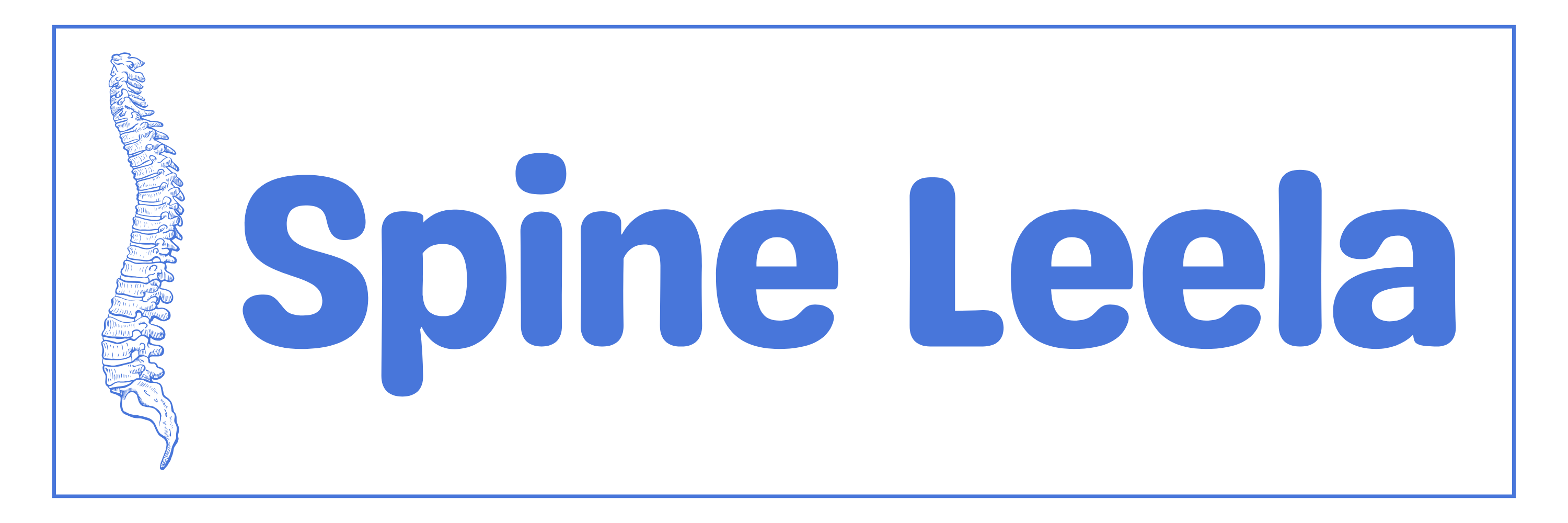- 14-1-3/1, Nowroji Rd, Opp More Supermarket, Visakhapatnam
- spineleela@gmail.com
- +91 95739 17693

Management of Osteoporosis
Strengthening Bones, Enhancing Quality of Life
Osteoporosis is a progressive condition that weakens bones over time, reducing their density and increasing the risk of fractures. This condition primarily affects weight-bearing bones such as the spine, hips, and wrists. Even minor movements or falls can lead to serious injuries when bone health is compromised. Osteoporosis occurs when the body either loses too much bone, fails to produce enough new bone, or both—ultimately weakening the spine and overall skeletal structure.
Dr. B Leela Prasad, a leading osteoporosis specialist in Visakhapatnam at Amulya Hospital, provides comprehensive care tailored to each patient’s needs. As the best bone health doctor in Visakhapatnam, Dr. Prasad focuses on early detection and effective osteoporosis treatment in Visakhapatnam to improve bone strength and reduce fracture risks.
Goals of Osteoporosis Management
- Prevent Bone Loss: Slow down or stop the loss of bone mass from getting worse.
- Reduce Fracture Risk: Make bones stronger to lower their risk of breaking.
- Improve Bone Strength: Diet, vitamins, and medicine can all help improve bone health.
- Enhance Mobility and Function: Maintain independence and prevent disability.
- Promote a Healthy Lifestyle: Encourage weight-bearing exercises and a balanced diet.
- Ensure Adequate Nutrition: Maintain sufficient calcium and vitamin D intake.
- Monitor Bone Health: Regular bone density tests for early detection and intervention.
- Prevent Falls and Injuries: Put in place safety steps to cut down on fractures caused by falls.
Risk Factors for Osteoporosis
Several factors can increase the likelihood of developing osteoporosis, including:
- Age: Bone mass naturally decreases with age.
- Gender: Women, especially postmenopausal women, are more prone to osteoporosis due to the decline in estrogen levels.
- Family History: A family history of osteoporosis or fractures may increase the risk.
- Lifestyle Factors: Lack of physical activity, poor diet (low calcium and vitamin D intake), smoking, and excessive alcohol consumption can contribute to bone loss.
- Medications: Long-term use of certain medications, such as corticosteroids, can increase the risk of osteoporosis.
Strategies for Managing Osteoporosis
1. Medications
Several medications can be prescribed to manage osteoporosis and help improve bone density:
- Bisphosphonates: These drugs help slow down bone loss and increase bone density, reducing the risk of fractures. Examples include alendronate, ibandronate, and risedronate.
- Selective Estrogen Receptor Modulators (SERMs): Medications like raloxifene mimic estrogen’s beneficial effects on bone density in postmenopausal women.
- Hormone Replacement Therapy (HRT): For women, HRT may be prescribed to increase estrogen levels and reduce bone loss during menopause.
- Parathyroid Hormone (PTH) Therapy: Teriparatide is a synthetic form of PTH that stimulates bone growth and increases bone density.
- Denosumab: This monoclonal antibody helps reduce bone resorption by inhibiting a protein involved in the breakdown of bone.
- Calcitonin: A hormone that helps regulate calcium levels in bones and reduces bone loss.
At Amulya Hospital, Dr. B Leela Prasad uses a combination of these advanced therapies and personalized care strategies to offer the most effective bone density management and long-term bone health solutions in Visakhapatnam.
2. Lifestyle Modifications
- Dietary Changes: Ensure adequate intake of calcium and vitamin D, which are essential for bone health. Good sources include dairy products, leafy greens, fortified cereals, and fatty fish.
- Exercise: Weight-bearing exercises (like walking, jogging, and resistance training) help strengthen bones and improve balance. Balance exercises also reduce the risk of falls, which can lead to fractures.
- Smoking Cessation: Smoking weakens bones and accelerates bone loss. Quitting smoking can help slow the progression of osteoporosis.
- Limit Alcohol Intake: Excessive alcohol consumption can lead to bone loss. Limiting alcohol can help maintain bone strength.
3. Fall Prevention
Falls are a significant cause of fractures in people with osteoporosis. Preventive measures include:
- Home Safety Modifications: Remove tripping hazards, install handrails, and ensure good lighting to reduce fall risks.
- Assistive Devices: Use canes, walkers, or other mobility aids if needed to maintain balance and prevent falls.
- Vision and Hearing: Ensure regular eye and hearing tests, as poor vision and hearing impairments can contribute to fall risk.
4. Regular Monitoring
- Bone Mineral Density (BMD) Tests: Regular BMD testing using dual-energy X-ray absorptiometry (DXA) scans helps monitor bone density and assess fracture risk.
- Fracture Risk Assessment: Tools like the FRAX score can help evaluate the likelihood of fractures in individuals with low bone mass.
Early Detection and Screening
- Bone Density Testing: Early detection of osteoporosis through bone density scans can help start treatment before fractures occur, allowing for better management of the condition.
- Risk Factor Assessment: Individuals at higher risk, such as postmenopausal women or those with a family history of osteoporosis, should undergo routine screenings.
Why Osteoporosis Management is Important
- Preventing Fractures: With proper management, the risk of debilitating fractures, especially hip, spine, and wrist fractures, can be reduced.
- Improved Bone Health: Effective treatment can help restore bone density, reducing the impact of osteoporosis on daily life.
- Enhanced Mobility: Preventing fractures and promoting bone strength helps maintain physical independence and quality of life.
- Reduce Complications: Osteoporosis management can help reduce complications like chronic pain, disability, and dependence on caregivers.
Take action today to preserve your bone health and enjoy a stronger, more active lifestyle.
Other Services
Want to consult about health? contact us
Your journey to optimal spinal health is just a call away—take the first step today!
Get in Touch
Get in touch with us today to start your journey toward better health and well-being—our experts are here to guide you every step of the way!

Contact Number
- +91 95739 17693

Hospital Location
- Open In 24 Hours
- 14-1-3/1, Nowroji Rd, Opp More Supermarket, Visakhapatnam

Email Us at
- spineleela@gmail.com

Dr. B. Leela Prasad is one of the country’s most renowned orthopedic doctors, with over 15 years of experience in the field. After earning his medical degree from Andhra Medical College, Visakhapatnam, he pursued post-graduation in Orthopedics at Guntur Medical College.
Visit Us at
- Amulya Hospital
- 14-1-3/1, Nowroji Rd, Opp More Supermarket, Visakhapatnam
- spineleela@gmail.com
- +91 95739 17693
- Hyma Nursing Home
- Main Road, Marripalem, Visakhapatnam-18
- HYMA Nursing : 07:30PM - 09:30 PM
- Copyright 2025 © All Right Reserved Dr. B Leela Prasad
